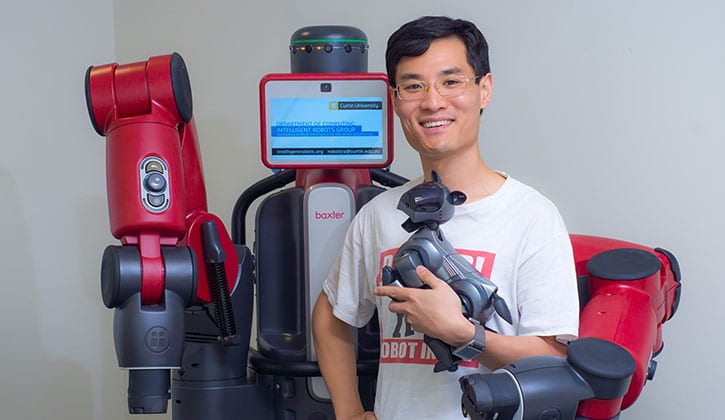An intelligent robot designed to work with humans is the focal point of collaborative research between Curtin’s Department of Computing and researchers in the United States and Europe.
Known as Baxter, the cutting-edge robot from Boston-based Rethink Robotics represents a new generation of intelligent manufacturing and research robots.
Dr Raymond Sheh, head of Curtin’s Intelligent Robots Group at Curtin’s Department of Computing said collaborative research using similar Baxter robots at the National Institute of Standards and Technology in Maryland, and the Technical University of Graz in Austria, was allowing Curtin researchers and students to leverage the work of international collaborators, amplify their unique contributions, and showcase their developments on the world stage
Dr Sheh is leading the development and implementation of new solutions to open problems in advanced intelligent robotics research.
“Traditional industrial robots must operate in areas where humans are excluded, but Baxter has been designed to work safely alongside humans, detecting their presence and reacting to their touch.
“Through the efforts of researchers and students, Baxter will be able to sense and learn about its environment and tasks, and adapt to changes in its surroundings.
“It will even discover new and better ways of performing its tasks, explain what it has discovered to its human colleagues, and justify its actions. It will also be able to measure its performance and quantitatively describe ways in which it is improving its ability to sense and act within its environment,” Dr Sheh said.
Baxter’s unique safety features and advanced software interfaces give undergraduate, masters and PhD students unprecedented freedom to perform cutting edge research in these areas of robot intelligence.
Over the last decade there has been a huge increase in the demand for intelligent industrial robots.
Western Australia is well-placed to take advantage of such developments with the resources sector in particular embracing intelligent automation to improve efficiency, lower risk and reduce the impact to the environment.
“Robots that are able to measure, explain, and justify their decisions are the next frontier in an industry where risk is an all-important factor,” Dr Sheh said.



